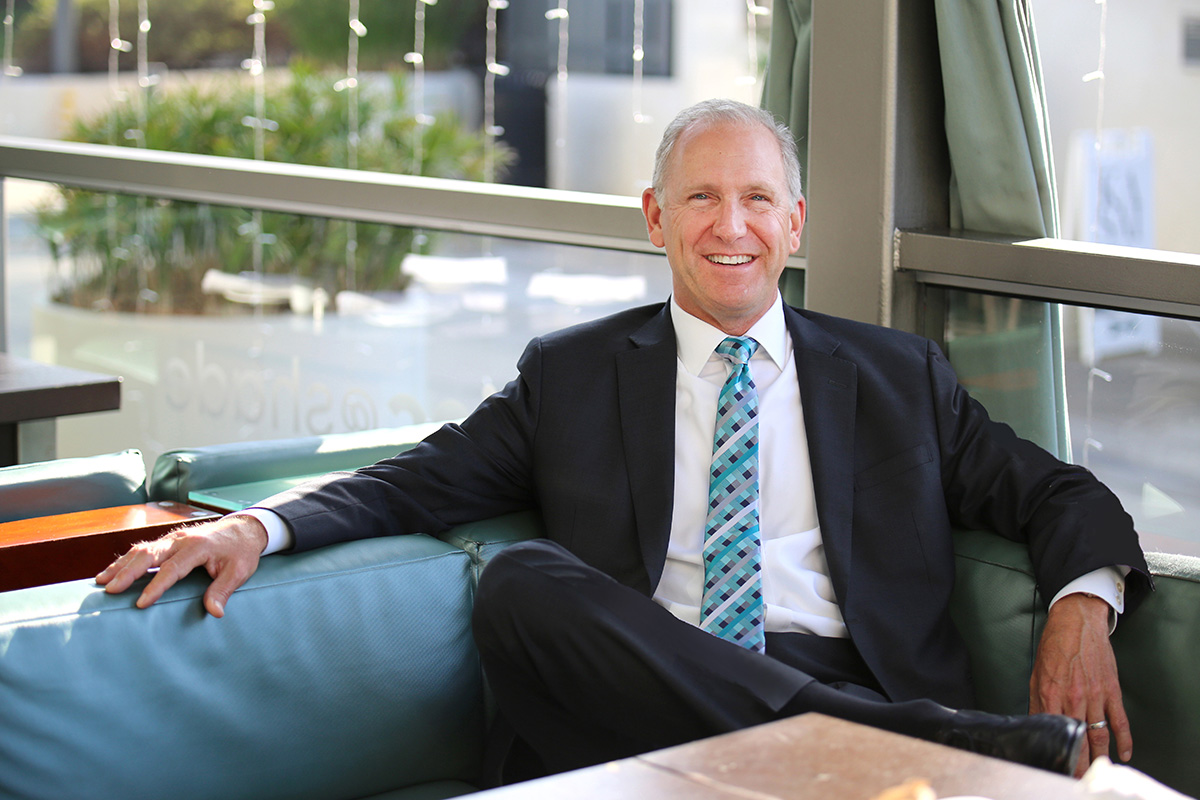Is executive coaching worth it? Is the value provided by executive coaching worth the cost of engaging a good coach?
We would respond to this question with another question:
Is the presence of an authentic leader in your organization worth it?
The value of an authentic leader to an organization cannot be overestimated. As we explored in a past article about Stanley McChrystal, authentic leaders bring the potential of transforming workforces into collaborative, fully-engaged, high performance teams.
Therefore, an executive coach capable of developing existing managers and executives into authentic leaders may well be worth exploring.
As you weigh the possibility of engaging an executive coach, here are a few other strong factors to consider:
All High Performers Have Coaches
Virtually everyone who has attained the heights of high performance, in every field that can be imagined, has had a coach.
Tiger Woods has had numerous coaches, and trains with one today. Michael Jordan had a coach. Tim Cook has been coached. Surfing legend Kelly Slater has several coaches – including a coach for yoga alone. Take LeBron James – not only has he been coached extensively throughout his career, but he is also reported to spend $1.5 million annually on his body.
High performers and champions understand that no one realizes their full potential through just their own individual efforts. While this may seem like common sense, our culture has also bequeathed upon us stories of bootstraps, determination, grit and rags-to-riches. While effort, practice, and disciplined application are central to our journey… the myth of the lone man or woman ascending to greatness may just be that: a myth.
At some point, every individual achieves the maximum level of development possible according to their level of awareness. At this time, working with a coach or mentor is key toward identifying those aspects of ourselves that we don’t know we don’t know.
Coaches Help Clients See Blind Spots
In life, there are things we know. There are also things we know we don’t know – like those of us who are quite certain we don’t know the first thing about Japanese tea ceremony.
Then, there are our blind spots. Our blind spots contain everything we don’t know that we don’t know. In our personal and professional lives, these blind spots are our automatic modes of behavior, assumptions, and fixed beliefs about ourselves and the world around us.
Since the current state of affairs in our lives and careers is an expression of the automated behaviors, assumptions and fixed beliefs in our blind spots – both the good and the bad – it can be very, very useful to bring them out of blind spots into the light of conscious awareness. This way, we have the option of changing them, or upgrading them to more useful behaviors and beliefs that serve our growth and development toward desired goals.
Part of being a human being is having blind spots where outdated behaviors and beliefs exist. Behaviors and beliefs that may have gotten us to where we are today, but which may need to be re-examined, discarded or modified in favor of more behaviors and beliefs that align with our next phase of development.
It can be extremely difficult to identify blind spots on our own, so everyone stands to benefit from a collaborative relationship with a trusted person who can help identify them.
Seeing into blind spots is one of the key services a great executive coach can provide. The executive willing to brave discomfort and explore their blind spots with their coach stands to win extremely valuable insight on how their behaviors and beliefs are affecting the people around them – and the organization as a whole.
Authenticity Is Key To Effective Leadership
As children, we all expressed a natural condition of wonderment, adventure, enthusiasm, curiosity and good will. We were ourselves. We were authentic. We knew what we liked. We knew what we didn’t like. And we had no problem calling things as we saw them.
So, what happened? Life happened….
We learned that the world is not always kind, and that it may not be safe to be our authentic selves. We traded in our authenticity for protective walls.
In order to begin wielding some kind of control over perceived dangers in our environment, these walls protected our authentic selves from feeling hurt, abandonment and rejection. These walls seemed safe. Of course, we had to decorate those walls so that people would still want to interact with us in some way. So we painted those walls with what we wanted the outside world to see. We call these paintings our “outer personalities.” Another word can be “facades.”
This process of developing outer personalities cuts both ways – the personal defense mechanisms we develop may have some short-term payoffs. We may feel they help us compete, achieving success along certain lines of competition, and retain the “approval” of some authority figures around us. Up to a certain point, our facades may move our careers forward.
However, while it may be possible to achieve a certain degree of success with our facades, they inhibit deeper levels of trust and connection – two things absolutely central to operating at high performance.
Once an individual graduates from outstanding individual contribution to team leadership, the negative impacts connected with presenting a facade tend to multiply. This is because suddenly, that person’s behavior now influences team members more directly than before.
Leading human beings is different from doing things alone, because work teams consist of people – not tools or objects to be operated upon. Eliciting the highest performance from a group of human beings means getting results through people, instead of treating them as tools to help get things done yourself.
Unlike the old days of being an individual contributor who worked with tools, a genuine leader empowers the people on their team to their own achievements that serve the team’s goals. Not the leader’s goals.
(Though a great leader’s personal goals are frequently one and the same with the team’s goals.)
The most effective way of achieving this sort of leadership is not a tool or newly minted framework or trademarked leadership method. Those follow a primary leadership trait. The primary thing for a leader to do is reclaim and lean into their authenticity.
That same authentic personality from childhood covered up by facades and the outer, survival personality.
Fortunately for us, authenticity expressed by an adult in a business setting looks different from authenticity expressed by that same adult in their earlier childhood state. The adult has mastered the rules of decent behavior. The adult also understands what service is. The adult may also have mastered non-verbal communication, and developed a degree of perceptiveness about what is going on beneath the surface-level human interactions.
Bringing the best of his or her socialized maturity, the developing leader leans into authenticity by beginning to share more of him or herself with others. They are more willing to be seen as a person, instead of expending energy to be perceived as perfect, or all-knowing.
For example, an authentic leader is more likely to say: “you know what? I’m not entirely sure what you mean by this… can you explain?”
Instead of saying, “absolutely, I know it very well,” and then retreating to the office to look it up on Wikipedia.
An authentic leader is more open, transparent, and understanding of others. When such behavior gets modeled from the top, team members notice, and begin to feel empowered to let their guard down, and connect with each other more authentically.
This connection, trust and openness made possible by authentic leadership forms the basis of a high performance organization.
A great coach can elicit the authentic person from the executive, and continually reinforce it so that it integrates into that executive’s daily activities. The outcome is that more influence accrues to such an executive, and new possibilities for the entire team begin to emerge.
How To Think About An Executive Coach
Rather than looking at an executive coach as an unusual incremental expense, consider viewing it as a part-time employee (with no benefits). A part-time employee who can elevate the entire company’s level of performance.
Also, think of your executive coach’s influence on the enterprise as a non-linear process. In other words, the coach may not directly, personally increase your quarterly bottom line… but can position your employees to more effectively move the organization forward.
Coaching A Single Individual Directly Influences Entire Team
The primary benefit of executive coaching is not training and development for a single person – though this individual stands to benefit greatly from coaching. The real benefit of executive coaching is the influence that participant has on the rest of the organization. And when the participant is at or near the top of the organization, the trickle-down effect of their high performance behaviors elevates the behavior and performance of the entire team.
An authentic leader who inspires greater openness, trust, and connection, also aims to get results through people. This leader lifts up, affirms, and empowers everyone around them to take responsibility for projects and new initiatives. This leader is capable of drawing out the best in the people around them. Such teams are highly collaborative, engaged, creative and productive.
Every person in an organization brings their talents and skills to the table. There may be even more hidden beneath the surface of the people where you work. Drawing forth the unexpressed insight, ability, and enjoyment from the hearts and minds of everyone in the organization, is most effective when it begins at the top. Or somewhere near the top.
Reflect upon what the presence of an authentic leader in your organization might look like.
How might such a person influence the company, and what might the value of that influence be?
Please feel free to contact us if you are ready to explore the possibilities of developing authentic leaders within your organization.





